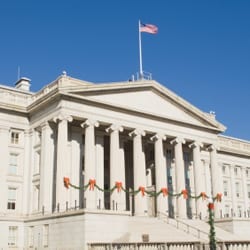We live in a new age of globalization. Unlike the world of our grandparents’ day, we live in a much smaller world. With just a few taps on our connected devices and less than a weeks’ time, goods from China arrive at our doorsteps. With just two clicks, we find ourselves face to face with friends, families and coworkers from across the globe. International travel is measured to the tune of hours instead of months.
The rate of people crossing physical and social borders isn’t the only thing that has accelerated; the rate of money moving across international walls has rapidly sped up. As this trend takes effect at a global scale, it is apparent that national economies are increasingly tied up in the economies of other nations. To the casual observer, the state of the global economy may seem to simply be a reflection of the advanced world we live in. To Vítor Constâncio, vice president of the European Central Bank, the state of the global economy poses a challenge to the economists and policymakers of all nations.
In an Oct. 15, 2015 speech, Constâncio discussed the new global economy and its impact on the way economists think about monetary policy. As he sees it, the state of the global economy is novel. Four changes have coalesced to create a new economic order with no historical precedent: increasing international influence of emerging economies, international fragmentation of production, liberalization of capital flows and the rise of global banks, and increased emphasis on monetary policy caused by the zero lower bound.
Our grasp of the impact of monetary policy changes has been further complicated by an increase in spillovers associated with the new global economy. As national economies integrate and trade increases, changes in exchange rates and capital flows play more and more significant roles in the economies of individual countries. Because monetary policy affects both exchange rates and capital flows, the importance of monetary policy — and the impact of spillovers — also increases. Thus, the effects of monetary policy changes in one nation will spill over into the economies of other countries.
In the closing statements of his speech, Constâncio mentioned the two leading strategies for coping with the new global economy and its spillovers. On the one hand, there is the traditional idea that “putting your own house in order” will protect against the effects of global volatility. On the other hand, the notion that global problems require global solutions is gaining popularity.
Since the global problems are based on the increasingly intertwined nature of the economies of different nations, the obvious solution to these issues is international policy coordination, specifically with regard to monetary policy.
As my classmate, Franklin Shen, has pointed out, the nature of monetary policy coordination has changed since the 1980s when the Plaza Accord agreement was passed. The changes in the global economy have not only increased the need for monetary policy coordination, they’ve increased the difficulty of implementing such coordination in the first place.
Another one of my peers, Kevin Guo, has written about whether it is “worth the trouble to maintain some sort of orderly economic interaction abroad.” He concludes that international cooperation on monetary policy is only feasible in the short-run and that nations are unlikely to work together in the long run.
I readily recognize the difficulties with monetary policy coordination. Coordination requires individual actors to work together, something central banks — which are, simply put, politically rooted — may not be at liberty to do. However, I believe this difficulty does not excuse nations from the responsibility of mitigating volatility in a global system fraught with spillovers. The logistical challenges do not dismiss the obligation to try.
Constâncio shares this view as well. In his speech, he listed a number of initiatives that have already been implemented to foster international cooperation. Among them are the IMF’s Flexible Credit Line, the EU’s European Stability Mechanism, and BRICS’ Contingent Reserve Arrangement. These examples show that while international monetary policy coordination may be difficult, steps can be taken.
In his conclusion, Constâncio leaves us with the imperative that “We should not be complacent.” Though the demands of monetary policy coordination are much higher now than they were 30 years ago, the need for such international collaboration necessitates that we tackle it despite the difficulties. In order to bring order into the chaotic mess of the new global economy, central banks and governments need to work together to protect domestic and international interests and provide the framework for a more stable international economy.
Patrick Ding is a Rice University junior majoring in mathematical economic analysis and business.
